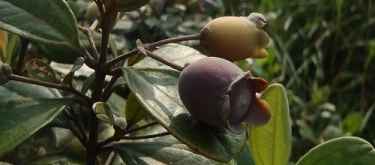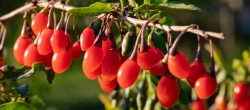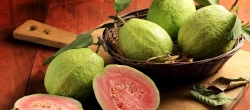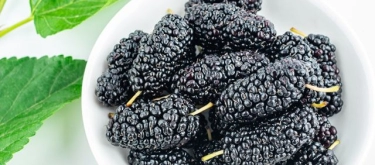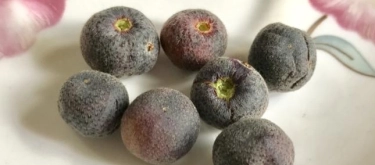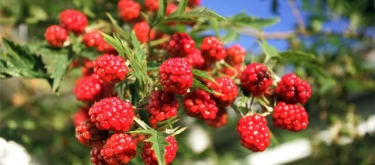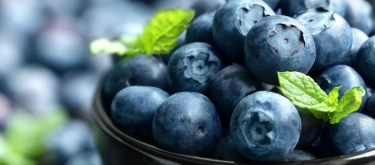Ugni molinae: Taste Profile, Aroma, Benefits and Health Risks
Ugni (Ugni molinae), commonly known as Chilean guava, strawberry myrtle, and uni, is a small evergreen shrub native to Chile and southern Argentina. It belongs to the myrtle family (Myrtaceae), which also includes guava and feijoa. The plant produces small, aromatic berries that are prized for their rich, sweet-tart flavor. Historically, ugni has been used in traditional Chilean cuisine and herbal medicine, and today it remains a sought-after ingredient in gourmet food and beverage production.
Ugni (Ugni molinae) is generally safe for consumption. However, individuals allergic to plants in the myrtle family (Myrtaceae) may experience mild reactions. Pregnant and breastfeeding women should consult a doctor before consuming ugni in large amounts. Due to its natural sugar content, excessive intake may not be suitable for diabetics.
What does Ugni molinae taste like?
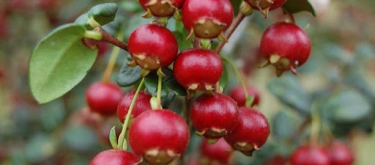
Complete Sensory Description
Taste
Ugni berries have a balanced sweet and tart flavor with subtle spiced undertones. The taste is often compared to wild strawberries, guava, and passionfruit, with some varieties developing hints of caramelized sugar as they ripen. When dried or cooked, the flavor deepens, revealing a more pronounced floral and honey-like character.
Aroma
The fruit's aroma is highly distinctive, featuring a combination of fresh strawberries, citrus zest, and light floral notes. When crushed, the berries release an intensified fragrance with hints of vanilla and tropical fruit.
Texture
Ugni berries have a soft, juicy pulp surrounded by a thin, firm skin that provides a slight bite before yielding to the fruit’s tender flesh. The small, edible seeds inside offer a mild crunch, enhancing the fruit’s textural complexity.
Appearance
Ugni berries are small, typically measuring 1 to 1.5 cm in diameter. Their color varies from deep red to dark purple when fully ripe, and the skin has a natural gloss that makes them visually appealing. The plant’s compact, clustered fruiting habit adds to its ornamental value.
In-depth Flavor Analysis
The flavor profile of ugni is primarily influenced by a balance of natural sugars, organic acids, and aromatic compounds. Fructose and glucose contribute to its natural sweetness, while citric and malic acid add tartness. Volatile esters and terpenes are responsible for the fruit’s floral and tropical aroma, while polyphenols, such as anthocyanins, enhance its mild astringency and antioxidant potential. The presence of methyl anthranilate, a compound also found in strawberries and grapes, gives ugni its characteristic fruity scent.
During processing, such as drying or cooking, enzymatic reactions alter the fruit’s chemical composition, reducing acidity and concentrating its natural sugars. This transformation enhances the fruit’s caramelized and honey-like notes, making it ideal for jams, syrups, and confections.
Varieties and Culinary Applications
Although ugni does not have widely cultivated commercial varieties, regional differences in growing conditions can influence fruit size, sweetness, and acidity. The berries are used in a variety of culinary applications, including:
- Fresh consumption – eaten raw as a snack or mixed into fruit salads.
- Jams and preserves – due to its high natural pectin content, which helps achieve a thick consistency.
- Desserts – incorporated into pies, tarts, ice creams, and syrups.
- Beverages – used to flavor herbal teas, cocktails, and fruit-infused liqueurs.
- Savory dishes – paired with roasted meats, especially duck and pork, for a sweet-savory contrast.
Selection and Storage
When selecting ugni berries, choose firm, plump fruits with a deep red or purple color. Avoid berries that appear wrinkled, overly soft, or have blemishes.
- Fresh ugni should be stored in the refrigerator and consumed within a week.
- Frozen ugni retains most of its flavor and texture for several months.
- Dried ugni can be stored in an airtight container for long-term use.
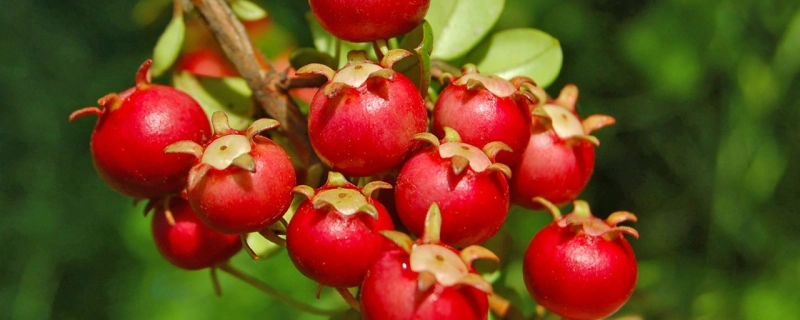
Nutritional Insights
Ugni is a nutrient-rich fruit with several potential health benefits:
- Vitamin C – supports immune function and collagen production.
- Antioxidants (anthocyanins and polyphenols) – help combat oxidative stress and inflammation.
- Dietary fiber – aids digestion and promotes gut health.
- Potassium and magnesium – contribute to heart health and muscle function.
Expert Insights & Culinary Tips
- Ugni pairs well with ingredients like vanilla, cinnamon, and citrus zest, enhancing its natural fruity and floral notes.
- Cooking ugni in syrups or compotes deepens its flavor, making it ideal for desserts.
- The fruit can be fermented into wine or infused into liqueurs to create aromatic beverages.
- Ugni's natural pectin content makes it a preferred fruit for homemade jams and jellies.
Interesting and Curious Facts
- Queen Victoria was said to favor ugni berries, which led to their cultivation in European gardens.
- The plant is highly resilient and can thrive in poor soils, making it suitable for low-maintenance gardening.
- Ugni has been used in Chilean folk medicine as a digestive aid and immune booster.
- The fruit is sometimes confused with cranberries, though they belong to different botanical families.
Harm and Dietary Considerations
- Allergic reactions – Individuals sensitive to myrtle family plants should consume ugni with caution.
- High sugar content – Although natural, excessive intake may not be suitable for diabetics.
- Perishability – Fresh ugni berries spoil quickly and should be consumed or preserved soon after harvest.
Religious Dietary Considerations
Ugni is generally permissible in most religious dietary frameworks, including Hinduism, Islam, and Buddhism. There are no known restrictions on its consumption in major religious traditions.
Final Thoughts & Sensory Journey
Ugni is a rare and highly aromatic fruit that balances sweetness, tartness, and floral complexity, making it a prized ingredient in both fresh and processed forms. Whether enjoyed as a jam, infused into beverages, or eaten raw, ugni offers a rich and multifaceted sensory experience that appeals to both casual fruit lovers and gourmet chefs.
Resources
- Journal of Food Chemistry – Studies on the chemical composition and antioxidant properties of ugni berries.
- Handbook of Edible Fruits – Culinary applications and traditional uses.
- Ethnobotanical Studies of Chilean Fruits – Research on the cultural and medicinal significance of ugni.
